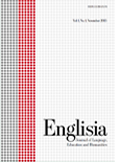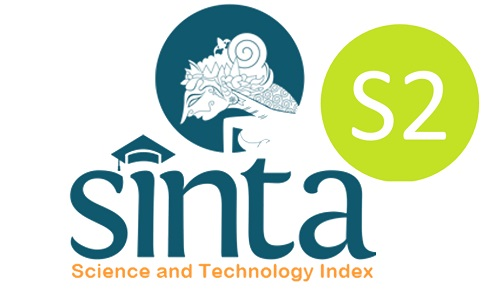THE COMPARISON OF CONVENTIONAL METAPHOR OF ANGER BETWEEN ENGLISH AND MALAY LANGUAGE AND THE IMPLICATION FOR TEACHING AND LEARNING
DOI:
https://doi.org/10.22373/ej.v1i1.142Keywords:
Conventional metaphor, English, MalayAbstract
Metaphor is often defined as a phrase used in an imaginative way to describe, com-prehend and conceive one thing in terms of something else. (Lakoff and Johnson, 1980) They, in addition, note that language, activity and human thought are con-ceptualized in metaphoric way. Furthermore, the metaphorical concept in thought is developed from several correlated experience. (Lakoff, 1992; Kovesces, 2005) For example, as it is explained by Lakoff, people talk about love in the way of talking about journey. Love is conceived in the way of journey is understood. Two lovers are positioned as two persons who are in traveling. Their relationship is the vehicle to gain their love expectations in the same way as destination in a journey. They use journey to conceptualize love and act of love in that way. When they find several difficulties along the way, it means that they have problems in their relationship.Downloads
References
BBC Learning English (2008) Language Point: Idioms of Anger. http://www.bbc.co.uk/worldservice/learningenglish/flatmates/episode27/languagepoint.shtml. Accessed 25 January 2008.
Budiawan. (2007) Metaphor: A semantic perspective. Proceedings of the 5th Interna-tional Conference on English Language Studies, August 2007. Santa Darma University, Yogyakarta, Indonesia.
Charteris-Black, J. (2002) Second language figurative proficiency: A comparative study of Malay and English, Applied Linguistics, 23 (1), 104-133.
Deignan, A. Gabrys, D. and Solska, A. (1997) Teaching English metaphors using cross-linguistic awareness raising activities, ELT, 51 (4), 352-360.
Dyen, I., Amir, A., Awal, A. and Seitelman, M. (1945) Spoken Malay. America: Linguistic Society of America.
El-Shirazy, H. (2004) Ayat-Ayat Cinta novel. Indonesia: Naragita Dinamika
Hui, L. K. (2003) Budi as the Malay Mind: A Philosophical Study of Malay Ways of Reasoning and Emotion in Pribahasa. M.A. thesis, Asia-Africa Institute Faculty of Oriental Studies of Hamburg.
Indonesian Local Newspaper Online (2008) Sasak. http://www.allbandung.com/abc-view-content.php?id=214. Accessed 25 January 2008.
Irujo, S. (1993) Streering clear: Avoidance in the production of idioms, IRAL, 31, 205-219.
Kovecses, Z. (2005) Metaphor in Culture: Universality and Variation. Cambridge: Cambridge University Press.
Kovecses, Z. (2000) Metaphor and Emotion: Language , Culture, and Body in Hu-man Feeling. Cambridge: Cambridge University Press.
Lakoff, G. (1992) The Contemporary Theory of Metaphor. Cambridge: Cambridge University Press.
Lakoff, G. and Johnson, M. (1980) Metaphors We Live By. Chicago: The University of Chicago Press.
Lakoff, G. and Johnson, M. (1980) Conceptual metaphor in everyday language, Philosophy, LXXVIII (8), 453-486.
Littlemore, J. and Low, G.D. (2006) Figurative Thinking and Foreign Language Learning. New York: Palgrave Macmillan.
Low, G.D. (1996) Controversy Flared. Unpublished Manuscript, Hongkong, pp. 34.
Low, G.D. (1988) On teaching metaphor, Applied Linguistics, 9 (2), 125-147.
Mumin, A. (1997) Aliran Romantisme Cerpen-Cerpen Wanita Brunei Darussalam 1984-1994. M.A. thesis, Universiti Brunei Darussalam.
Phraseology and Collocation; Dictionary Use (nd) Metaphor, the Dictionary and the Advanced Learner. http://amsacta.cib.unibo.it/archive/00002062/01/metaphordictionary.pdf Ac-cessed 24 January 2008.
Skoufaki, S. (2005) Cognitive Linguistics and L2 Idiom Instruction. Proceeding of the First Annual Conferenceon Post-Cognitivist Psychology, 4-6 July 2005. Cambridge: University of Cambridge.
Downloads
Published
Issue
Section
License
Proposed Policy for Journals That Offer Open Access
Authors who publish with Englisia journal agree to the following terms:
- Authors retain copyright and grant the journal right of first publication with the work simultaneously licensed under a Creative Commons Attribution License that allows others to share the work with an acknowledgement of the work's authorship and initial publication in this journal.
- Authors are able to enter into separate, additional contractual arrangements for the non-exclusive distribution of the journal's published version of the work (e.g., post it to an institutional repository or publish it in a book), with an acknowledgement of its initial publication in this journal.
- Authors are permitted and encouraged to post their work online (e.g., in institutional repositories or on their website) prior to and during the submission process, as it can lead to productive exchanges, as well as earlier and greater citation of published work (See The Effect of Open Access).









